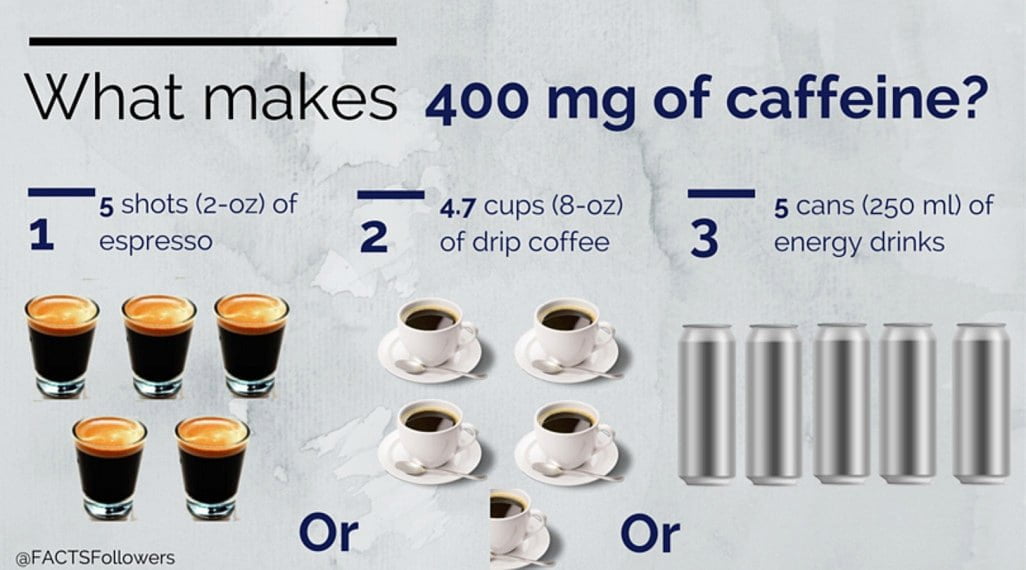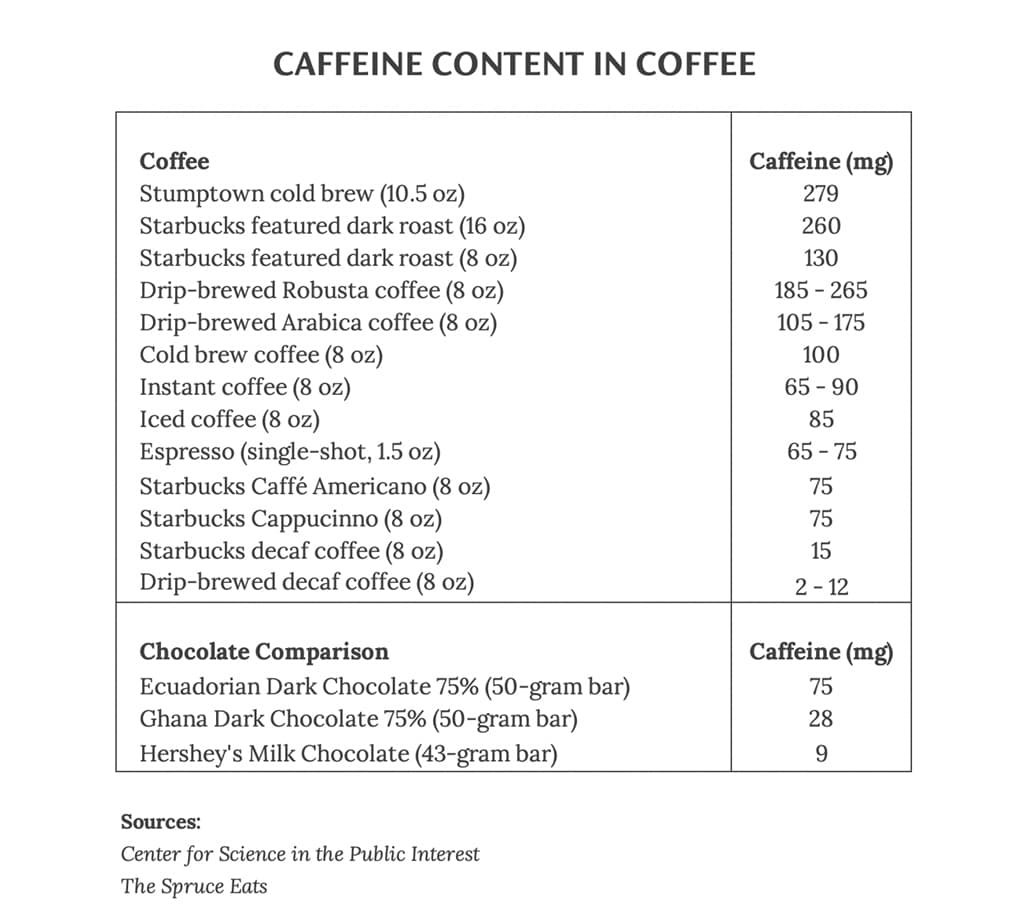

It’s important to note that the actual caffeine content of a particular cup of coffee may vary depending on these factors. Additional Caffeine: Some brands might have higher caffeine levels by adding caffeine to the coffee beans during the roasting process.Bean’s origin: Different regions where the beans are grown can have varying caffeine levels.for example, Starbucks’ cup sizes have different caffeine levels. Serving size: The larger the serving size, the more caffeine in the coffee.A stronger brew will have more caffeine than a weaker brew, even if the same type and amount of beans are used. Brewing method: Different brewing methods, such as drip, French press, and pour-over, can affect the caffeine content.Roast level: The darker the roast, the less caffeine content in the coffee beans.Robusta beans typically have higher caffeine content than Arabica beans.

Type of coffee bean: Different types of coffee beans, such as Robusta and Arabica, can have different caffeine levels.There are several factors that can affect the caffeine content of coffee: What Factors Affect the Caffeine Content of Coffee? For example, light roast coffee tends to have less caffeine than dark roast coffee because the roasting process can reduce the amount of caffeine in the bean. However, the caffeine content can vary depending on the type of bean and the roast. On average, a cup (8 oz) of brewed coffee contains about 95 milligrams of caffeine. The amount of caffeine in a cup of coffee can vary depending on various factors such as the type of coffee bean, the brewing method, and the serving size. In addition to its stimulating effects, caffeine can also improve mood, reduce fatigue, and enhance cognitive function. It is a central nervous system stimulant, which means it can stimulate the brain and nervous system, leading to increased alertness and energy. Caffeine is a naturally occurring stimulant found in coffee beans, as well as in other foods and beverages such as tea, chocolate, and some soft drinks.


 0 kommentar(er)
0 kommentar(er)
